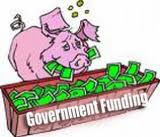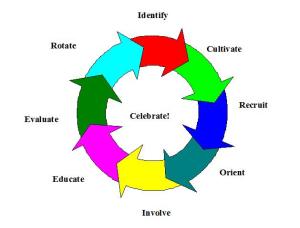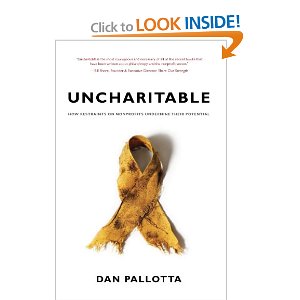On Monday, I shared with you a few observations from The Wizard of Oz and Oz: The Great and Powerful as I think it pertains to non-profit work. At the end of Monday’s post I promised to take you further down the Yellow Brick Road by revisiting a series of Oz-inspired posts from two years ago. Today’s post is about board composition and board development. Enjoy . . . here’s to your health! ~Erik
Don’t put Dorothy on your board of directors
Originally published on October 27, 2011
 September 15, 2008 . . . do you remember where you were and what you were doing? It was the day the world changed. It was what some people have called an “economic 9-11″. Regardless of how you characterize the day that Lehman Brothers filed for bankruptcy and the stock market started its crash, it is hard to argue the following: 1) the economic paradigm we all used to live in shifted and 2) nothing will ever be the same again.
September 15, 2008 . . . do you remember where you were and what you were doing? It was the day the world changed. It was what some people have called an “economic 9-11″. Regardless of how you characterize the day that Lehman Brothers filed for bankruptcy and the stock market started its crash, it is hard to argue the following: 1) the economic paradigm we all used to live in shifted and 2) nothing will ever be the same again.
This week I have used characters from “The Wizard of Oz” to talk about current challenges facing the non-profit sector. Today, we will spend a moment talking about Dorothy.
Dorothy is an iconic character who has been described as a “level-headed, plucky, resourceful, determined, all-American, populist”. However, I’ve always seen her as a traditional “conservative”. Don’t believe me? Refresh your memory with this quick YouTube clip. Of course, I don’t mean this in any kind of political way, but more of the traditional meaning of “holding to traditional attitudes and values and cautious about change or innovation”.
You cannot afford to have Dorothy on your board of directors during these tough and turbulent economic times!
 Mentally take a look around your board room and see if you can identify how many Dorothy-like volunteers occupy chairs. They are kind folks (dare I say friends) who look and sound like the following:
Mentally take a look around your board room and see if you can identify how many Dorothy-like volunteers occupy chairs. They are kind folks (dare I say friends) who look and sound like the following:
- They are frightened by the economic “tornado” whirling throughout the world. They talk about economic news constantly.
- They wish for yesteryear and reminisce about times when your non-profit was facing a different set of circumstances. They fixate on making things better . . . just like they “used to be”. They’re focused on making that formerly kick-butt special event awesome again. They’re insistent that you can hold onto all of your government grants if you just tried a little harder. After all, there is no place like home.
- They are visibly closed to new and innovative ideas that have not been tried. They believe ePhilanthropy is a passing fad. They won’t entertain ideas around merger, acquisition, or strategic alliances that share back office functions. After all, that is not the Kansas they so fondly remember.
 Don’t get me wrong. I am not suggesting a “witch hunt” to root out these folks and fire them. Dorothy serves an important role on your board. She is that cautious voice that keeps you from getting into trouble. She will stop you from pulling the plug on your annual campaign and direct mail appeals and “going all in” on ePhilanthropy efforts. Valuable? YES! However, what happens when you have too many Dorothy-like board members? Or what if you have those well-intentioned people serving in the wrong roles (e.g. board president, annual campaign chair, strategic planning committee, etc)?
Don’t get me wrong. I am not suggesting a “witch hunt” to root out these folks and fire them. Dorothy serves an important role on your board. She is that cautious voice that keeps you from getting into trouble. She will stop you from pulling the plug on your annual campaign and direct mail appeals and “going all in” on ePhilanthropy efforts. Valuable? YES! However, what happens when you have too many Dorothy-like board members? Or what if you have those well-intentioned people serving in the wrong roles (e.g. board president, annual campaign chair, strategic planning committee, etc)?
My best two pieces of advice for non-profit staff and board volunteers this morning are:
- Be especially strategic and thoughtful about where you ask these people to serve in your organization. This means that you need to: a) identify who these folks are and b) have a clear understanding of which volunteer opportunities are acceptable for conservative personalities.
- Focus your board development efforts over the next year on recruiting people in your community who don’t resemble Dorothy to serve on your board. This is not the time to pine for Kansas! This means your board development committee needs to double down on the “prospect identification” and “prospect evaluation” elements of the board recruitment process. Gone are the days when everyone sits around a table and tosses out names of good, kind and resourceful people. BE STRATEGIC!
I suggest that the type of people your board development committee should look for exhibit some of the following characteristics:
- They don’t appear to be “personally” economically impacted by the Great Recession
- Their business or line of work seems to be doing fine
- They are naturally positive and have a decent outlook on the future
- They seem to be open to new ideas (as evidenced in their personal and professional lives)
- They are “outside-of-the-box thinkers (as evidenced in their personal and professional lives)
Remember, if you want to keep the flying monkeys away from your non-profit agency, STAY AWAY FROM DOROTHY.
OK — if you aren’t buying into my cheesy “Wizard of Oz” analogy, then please go to the library and borrow the book “Who Moved My Cheese“. You’ll thank me later.
How has your agency adapted to the new realities? Have you changed your resource development model or are you still trying to do things the old way? Do you see your board development efforts changing or focusing on different types of prospects? Please use the comment box below and weigh-in. Please remember that we can all learn from each other. In fact, it is probably the most effective way many of us learn.
Here is to your health!
Erik Anderson
Founder & President, The Healthy Non-Profit LLC
www.thehealthynonprofit.com
erik@thehealthynonprofit.com
http://twitter.com/#!/eanderson847
http://www.facebook.com/eanderson847|
http://www.linkedin.com/in/erikanderson847

 As a new business owner who just opened up a nonprofit & fundraising consulting practice, I’ve made it my business to “get around”. In addition to visiting with many of my oldest and dearest non-profit friends in Elgin, Illinois, I recently attended a regional Boys & Girls Club conference and engaged countless staff and board volunteers from around the country through a very aggressive social media strategy including Twitter, Facebook, LinkedIn and this blog. While I don’t want to exaggerate, I was surprised at how many conversations looked and sounded like this
As a new business owner who just opened up a nonprofit & fundraising consulting practice, I’ve made it my business to “get around”. In addition to visiting with many of my oldest and dearest non-profit friends in Elgin, Illinois, I recently attended a regional Boys & Girls Club conference and engaged countless staff and board volunteers from around the country through a very aggressive social media strategy including Twitter, Facebook, LinkedIn and this blog. While I don’t want to exaggerate, I was surprised at how many conversations looked and sounded like this Last month I wrote on post entitled
Last month I wrote on post entitled  The alternative is this with the same beginning:
The alternative is this with the same beginning: Here’s the rub . . . Board strength isn’t just an internal issue that is invisible to the community. It is visible. Here’s what it looks like:
Here’s the rub . . . Board strength isn’t just an internal issue that is invisible to the community. It is visible. Here’s what it looks like:
 The news last week that the Justice Department will freeze grant funding for
The news last week that the Justice Department will freeze grant funding for  I believe that when money is abundant controls are less strict. Conversely, when resources are scarce . . .
I believe that when money is abundant controls are less strict. Conversely, when resources are scarce . . . Welcome to O.D. Fridays at DonorDreams blog. Every Friday for the foreseeable future we will be looking at posts from John Greco’s blog called “
Welcome to O.D. Fridays at DonorDreams blog. Every Friday for the foreseeable future we will be looking at posts from John Greco’s blog called “ Too many resource development plans (aka fundraising plans) are written behind close doors without any input from those who we depend upon to help with implementation. And then we wonder why no one is jumping in to help and why board members are acting as if to say: “That’s not what I agreed to do … go implement YOUR plan.”
Too many resource development plans (aka fundraising plans) are written behind close doors without any input from those who we depend upon to help with implementation. And then we wonder why no one is jumping in to help and why board members are acting as if to say: “That’s not what I agreed to do … go implement YOUR plan.”



 The single most important thing an organization can do to ensure its sustainability is develop its board. You may be thinking — “No Dani, it’s staff, leadership, programming, impact or fundraising” — and all of those things are important, but none of them can happen the way they should without a strong board. Everything flows from a strong board of directors.
The single most important thing an organization can do to ensure its sustainability is develop its board. You may be thinking — “No Dani, it’s staff, leadership, programming, impact or fundraising” — and all of those things are important, but none of them can happen the way they should without a strong board. Everything flows from a strong board of directors.



 Identifying blog topics can be hard. Sometimes you find a comfort zone and ideas flow freely. Other times, it is next to impossible and the writers block is crippling. So, I love it when readers sometimes email me on the side and suggest topics.
Identifying blog topics can be hard. Sometimes you find a comfort zone and ideas flow freely. Other times, it is next to impossible and the writers block is crippling. So, I love it when readers sometimes email me on the side and suggest topics.





